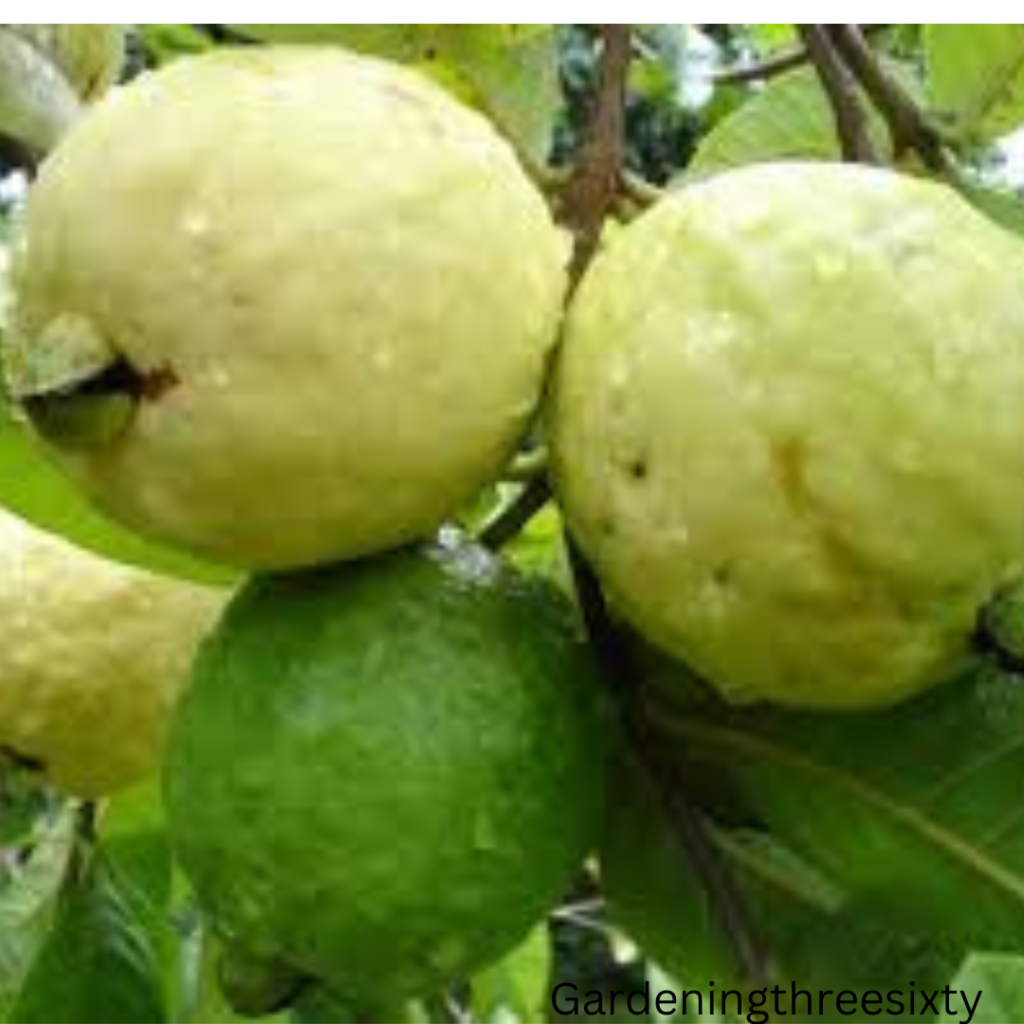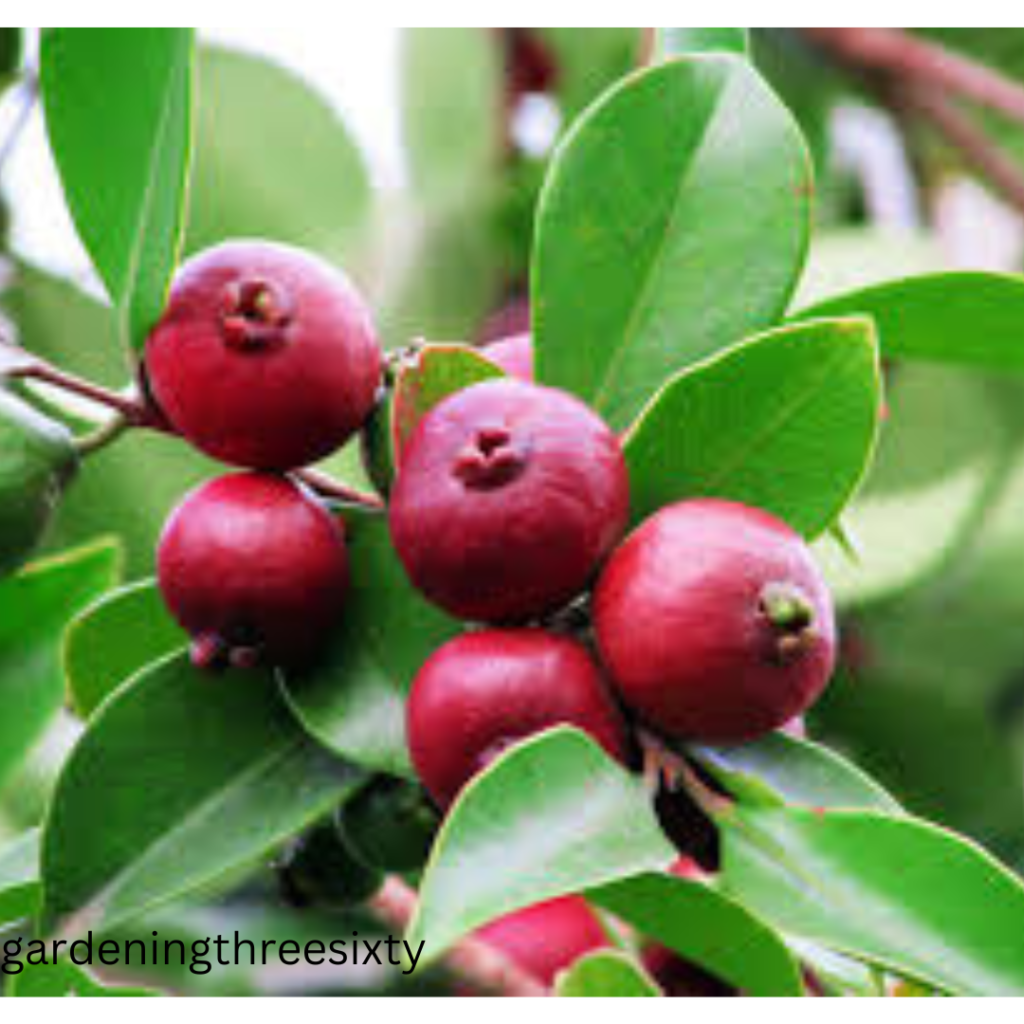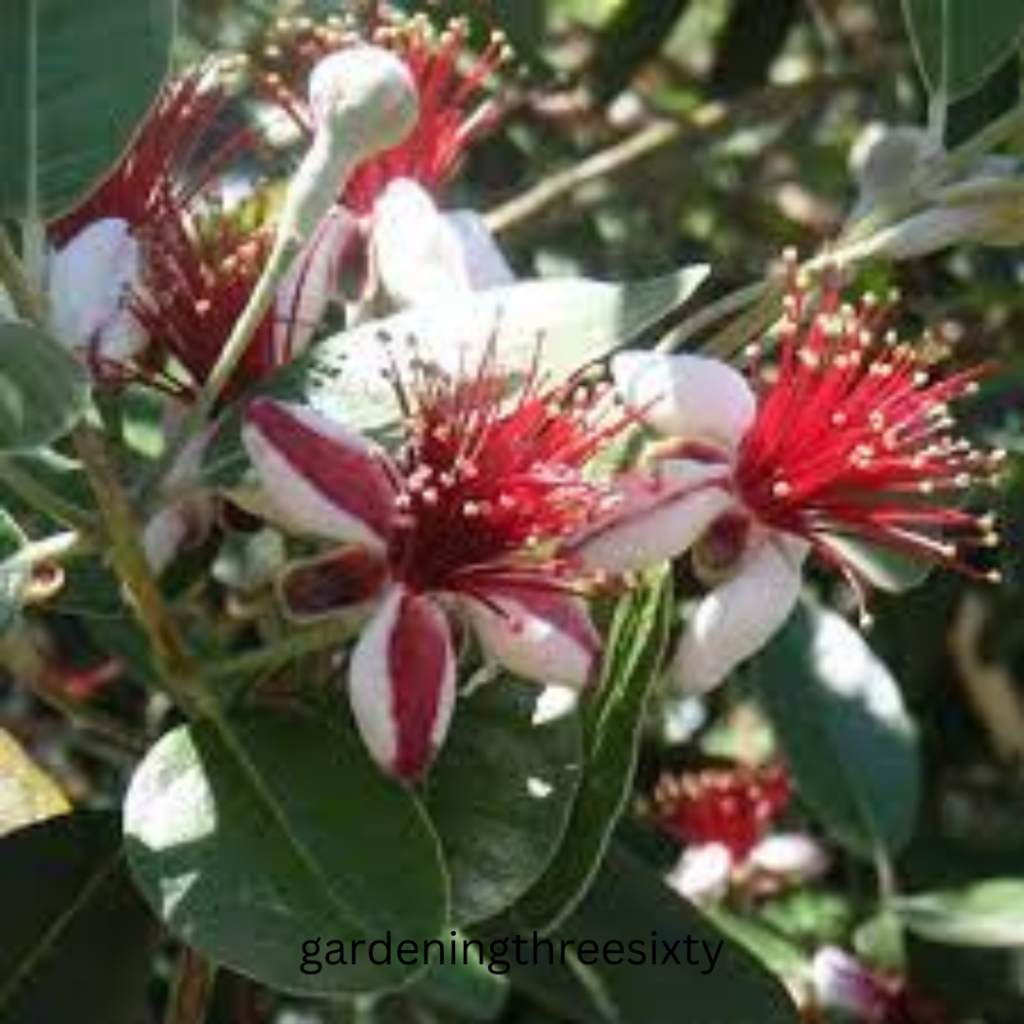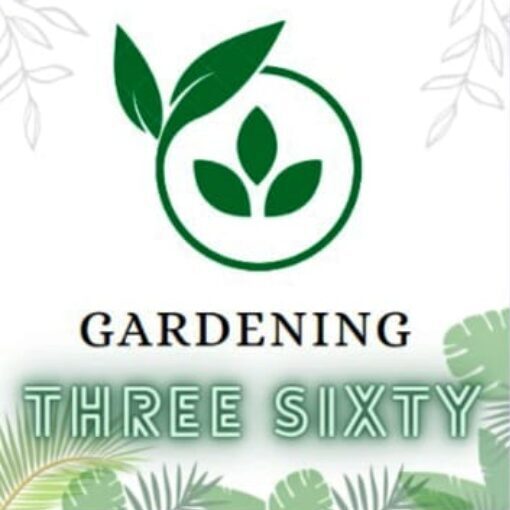Guava Seed Germination is the process through which a seed transforms into a new plant of Guava. It involves the activation of the seed’s embryo, leading to the emergence of a root and shoot system. Germination is the amazing process by which a tiny seed transforms into a brand-new plant. It’s like magic, but it’s driven by science! Inside a seed lies an embryo, the baby plant waiting for just the right conditions to grow.
When a seed gets exposed to moisture, oxygen, and the right temperature, it awakens from its dormant state. The seed coat, which acts like a protective shell, starts to break open. A tiny root called the radicle emerges first, burrowing down into the soil to anchor the plant and search for water. Next, the shoot, which will become the stem and leaves of the plant, pushes upwards towards the sunlight. This fragile sprout is called a seedling. Germination marks the beginning of a plant’s life, a journey from a simple seed to a flourishing plant.

Importance of Germination in Plant Growth
Germination is crucial for plant growth as it marks the beginning of a plant’s life cycle. It allows seeds to develop into seedlings, which eventually grow into mature plants capable of producing fruits or flowers. Germination is the fundamental turning point in a plant’s life cycle, marking the transition from a dormant seed to a growing seedling.
It’s critical for plant growth because it sets the stage for the development of all the essential structures a plant needs to thrive. Successful germination ensures a strong foundation for the root system, which anchors the plant and absorbs water and nutrients from the soil. It also paves the way for the emergence of the shoot, which contains the stem and leaves.
Leaves are vital for photosynthesis, the process by which plants capture sunlight and convert it into energy for growth. In short, germination ignites the engine of plant growth, allowing the seedling to establish itself and begin its journey toward maturity.
Characteristics of Guava Seed Germination
Guava seed germination can be a bit of a challenge. Unlike some seeds that sprout quickly, guava seeds have a tough outer coat that impedes water absorption and delays germination. This dormancy period can lead to erratic and slow sprouting, sometimes taking up to 12 weeks.
The ideal temperature for germination is between 70-85°F (21-29°C), and cooler soil temperatures will significantly slow things down. To improve your chances of success, some gardeners scarify the seeds by nicking the outer coat to aid moisture uptake. Patience is key with guava seeds, but with the right conditions, you’ll be rewarded with new guava growth.
Overview of Guava Seed Germination
Guava seeds are small, oval-shaped seeds found within the fruit. They are typically light brown and contain the genetic information necessary for germination and plant development. Guava seeds can be coaxed into sprouting with a little patience and care.
The first step often involves breaking seed dormancy, a natural defense that prevents germination until conditions are favorable. This can be achieved by soaking the seeds in warm water for a couple of weeks or briefly boiling them. Afterward, plant the seeds in a pot filled with well-draining, sterile seed starting mix. Keep the soil moist but not soggy, and place the pot in a warm location with plenty of sunlight.
Germination can take anywhere from two to eight weeks, depending on temperature and other factors. Once sprouts emerge, provide consistent warmth and humidity until they are established seedlings ready for transplanting.

Factors influencing Guava Seed Germination
Several factors influence guava seed germination, including temperature, moisture levels, soil quality, and light exposure. Several factors play a crucial role in determining how successfully a guava seed germinates. Environmental conditions like temperature and light are key. Ideal temperatures tend to be in the range of 20-25°C, while light exposure can influence the germination process depending on the type of light.
Seed characteristics also matter. Fresh, healthy seeds with proper moisture content will germinate better than old or damaged ones. Additionally, some guava varieties exhibit seed dormancy, requiring specific treatments to break this dormancy and allow germination to occur.
Finally, factors like planting depth and the growing medium used can also affect how well guava seeds germinate. By optimizing these elements, you can significantly increase your chances of successful guava seed germination.
Preparing Pot for Guava Seed Germination
To create the perfect environment for your guava seeds, start with a pot that has drainage holes. This will prevent waterlogging, a common enemy of seedlings. Fill the pot with a well-draining potting mix. A good option is a seed-starting mix, which is lightweight and provides excellent aeration and moisture retention for germination.
Alternatively, you can create your mix by combining equal parts potting soil, perlite, and compost. Aim to fill the pot only to about ¾ capacity, leaving space for the seeds and future growth.
Selecting a suitable pot for Gava Seed Germination
Choose a pot that is spacious enough to accommodate the germinating seeds and has adequate drainage holes to prevent waterlogging.
Choosing the right soil for Gava Seed Germination
Opt for well-draining soil with a balanced pH level. A mixture of potting soil, perlite, and compost can provide the ideal growing medium for guava seeds.
Steps for Guava Seed Germination
Guava seeds have a tough outer shell that can benefit from a little encouragement to germinate. Here’s how to get your seeds sprouting. Start by extracting the seeds from a ripe guava fruit. You can soak the flesh in water to loosen the seeds, then separate them and discard any pulp. To help break seed dormancy, try one of two methods: soak the seeds in warm water for 24-48 hours, or briefly dip them in boiling water for just a few seconds.
Prepare a pot with drainage holes filled with a well-draining seed starting mix. Moisten the mix but avoid saturating it. Plant each seed shallowly, about half a centimeter deep, and cover lightly with soil. Wrap the pot loosely in plastic to create a humid environment.
Seed selection and preparation for Guava Seed Germination
Select healthy guava seeds free from damage or decay. Soak the seeds in water overnight to soften their outer coating and enhance germination rates.
Planting the seeds in the pot for Guava Seed Germination
Place the soaked seeds in the prepared pot, ensuring they are covered with a thin layer of soil. Maintain a moist but not waterlogged environment.
Watering and temperature requirements for Guava Seed Germination
Water the soil lightly to keep it consistently moist. Maintain a warm temperature range of 75-85°F (24-29°C) for optimal germination.

Care and Maintenance During Guava Seed Germination
Germinating guava seeds requires a delicate balance of moisture and warmth. Here’s how to nurture your baby guava tree: First, use fresh seeds from a ripe guava fruit. Wash them gently and place them in a shallow container filled with warm, moist potting mix.
Cover the container with plastic wrap to create a mini greenhouse. Keep it in a warm location with bright, indirect sunlight. Daily, open the plastic wrap for a few minutes to allow for air circulation and prevent mold growth. Finally, be patient! Germination can take several weeks, so maintain consistent moisture and warmth until you see those first green sprouts emerge.
Monitoring seedlings’ growth for Guava Seed Germination
Regularly check the pot for signs of germination, such as emerging sprouts. Monitor moisture levels and adjust watering as needed to prevent drying out or waterlogging.
Providing adequate sunlight for Guava Seed Germination
Place the pot in a location with indirect sunlight or use grow lights to provide sufficient light for healthy seedling development.
Common Challenges and Solutions for Guava Seed Germination
Guava seeds can be stubborn germination. Dormancy due to a hard seed coat and inconsistent temperatures are frequent culprits. To overcome these challenges, scarification by nicking the seed coat with a nail file can aid germination. Soaking the seeds for 24 hours in warm water also helps soften the coat. Patience is key, as germination can take several weeks. Bottom heat using a heat mat can provide consistent warmth and expedite the process. Finally, ensure the planting medium is moist but well-draining to prevent rot. With a little extra care, you can increase your chances of successfully sprouting your guava seeds.
Dealing with pest infestations for Guava Seed Germination
Inspect the seedlings regularly for pests such as aphids or mites. Use organic pest control methods or insecticidal soap to manage infestations.
Addressing nutrient deficiencies for Guava Seed Germination
Monitor plant growth for signs of nutrient deficiencies, such as yellowing leaves or stunted growth. Adjust fertilization levels accordingly to ensure optimal nutrient uptake.
Timeframe for Guava Seed Germination
The wait for your guava seeds to sprout can feel like an eternity, but fret not! Guava seed germination typically falls within a window of 3 to 10 weeks. This timeframe can fluctuate depending on several factors. Fresh seeds generally germinate faster than older ones. Temperature plays a crucial role – ideally, aim for a warm environment between 70-85°F (21-29°C). Cooler climates might require a heat mat to maintain consistent warmth and accelerate germination.
Humidity levels also influence the process. Aim for a consistently moist but not soggy environment. Overwatering can lead to seed rot while underwatering can hinder germination altogether. Be patient and consistent with watering, and those tiny green shoots should emerge within the expected timeframe. If after 10 weeks you see no signs of life, you can try restarting the germination process with fresh seeds.

Expected duration for Guava Seed Germination
Guava seeds typically germinate within 2-4 weeks under optimal conditions. However, germination times may vary based on environmental factors.
Signs of successful Guava Seed Germination
Look for the emergence of cotyledons (seed leaves) and true leaves as indicators of successful germination and seedling development.
Transferring Seedlings to Outdoor Settings
Hardening off seedlings
Gradually expose the seedlings to outdoor conditions, starting with short periods of sunlight and increasing exposure over several days to acclimate them to outdoor environments.
Planting seedlings in the garden
Choose a sunny location with well-draining soil for transplanting seedlings. Space the plants according to their mature size to allow for proper growth.
Benefits of Growing with Guava Seed Germination
There’s a certain satisfaction and connection that comes with nurturing a guava tree from a tiny seed. Germinating your guava seeds offers several benefits. Firstly, it’s a cost-effective way to cultivate your fruit source. Unlike buying a grafted tree, you won’t know the exact variety from seed, but the surprise element can be exciting!
Secondly, seed-grown guava trees tend to be hardier and more adaptable to your local environment compared to commercially grafted varieties. This is because they inherit traits from both parent plants, potentially leading to increased resistance to pests and diseases in your specific climate.
The germination process itself can be a rewarding learning experience, offering a glimpse into the fascinating world of plant growth. Witnessing the transformation from a seed to a thriving tree fosters a deeper appreciation for the natural world and the delicious fruit it provides.
Cost-effectiveness of Guava Seed Germination
Growing guava from seed is cost-effective compared to purchasing seedlings or mature plants, making it accessible for home gardeners.
Genetic Diversity of Guava Seed Germination
By growing guava from seed, you can preserve genetic diversity within the species, leading to potentially unique and resilient plants.
You May also interested in reading this
Transferring Seedlings to Outdoor Settings for Guava Seed Germination
Transplanting your guava seedlings outdoors is an exciting step! But before you expose them to the elements, a process called hardening off is crucial. This allows the tender seedlings to gradually adjust to harsher outdoor conditions like sunlight, wind, and fluctuating temperatures.
Start by bringing your seedlings outside for short periods in a shaded area, slowly increasing the duration and intensity of sunlight exposure over a week or two. Watch for signs of stress like wilting leaves, and move them back to shade if needed. Once the seedlings appear adapted, choose a sunny location with well-draining soil. Dig individual holes slightly larger than the root ball and amend the soil with compost for extra nutrients.
Carefully transplant your guava seedlings, ensuring the base sits level with the surrounding soil. Water them deeply to settle the soil and continue to provide regular watering, especially during dry spells. With proper hardening and care, your guava seedlings will thrive in their new outdoor home!
Hardening off seedlings
Before transplanting guava seedlings outdoors, it’s essential to harden them off. This process involves gradually exposing the seedlings to outdoor conditions over 1-2 weeks. Start by placing them in a sheltered area with partial sunlight for a few hours each day, then gradually increase exposure.
Planting seedlings in the garden
Choose a sunny location in your garden with well-draining soil. Dig holes slightly larger than the root ball of each seedling and space them according to their mature size, typically 8-10 feet apart for guava trees. Gently remove seedlings from their pots, taking care not to disturb the roots, and place them in the prepared holes. Backfill with soil and water thoroughly to settle the roots.
Conclusion of Guava Seed Germination
In conclusion, germinating guava seeds in pots and transferring seedlings to outdoor settings is a rewarding process that allows you to grow healthy guava plants from scratch. By following the outlined steps, from seed selection to outdoor planting, and providing proper care and maintenance, you can enjoy the benefits of homegrown guavas, including cost-effectiveness and genetic diversity.
Guava seed germination can be a rewarding experience, but it requires patience and attention to detail. The key to success lies in breaking seed dormancy, which can be achieved by soaking the seeds in water for two weeks or briefly boiling them. This softens the seed coat and allows for faster germination. Once prepared, plant the seeds in a well-draining potting mix with warm temperatures around 65°F (18°C).
Consistent moisture is crucial, so mist the soil regularly to keep it damp but not soggy. Germination can take anywhere from two to eight weeks, depending on the variety and temperature. With proper care, you should soon see tiny green shoots emerge from the soil, marking the beginning of your guava tree’s journey.
FAQ’s
How long does it take for guava seeds to germinate?
Guava seeds can take anywhere from two to eight weeks to germinate [5]. The exact germination time will depend on a few factors, such as the temperature and moisture levels. If you’re looking to speed up the germination process, you can try placing the pot on a heat mat to keep the soil consistently warm.
Which season is best for growing guava?
Guava trees are tropical and prefer warm temperatures year-round. However, fruiting is influenced by cooler seasons as well.
What is the best fertilizer for guava trees?
Guava trees are considered heavy feeders, meaning they need more nutrients than your average plant to thrive and produce a good amount of fruit. There are two main options for fertilizing guava trees: organic and inorganic
How do you germinate guava seeds in a paper towel?
Extract and Clean the Seeds, Soak (Optional), Prepare the Paper Towel, and lace the Seeds.
